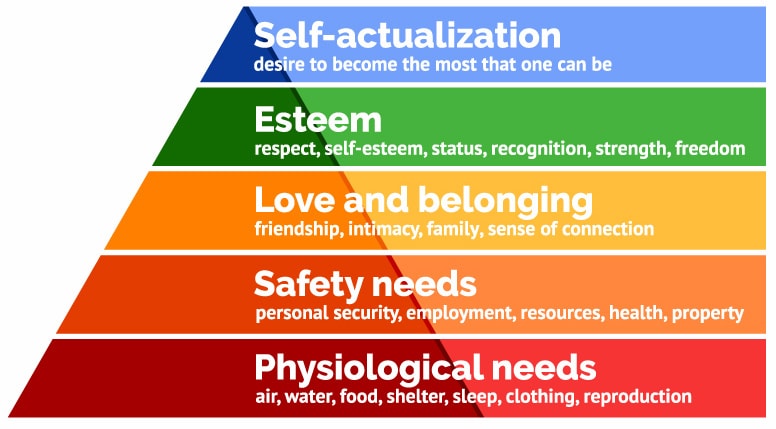Understand the pulse of a remote employee automatically using our employee engagement survey software with ease.
How are you feeling today? The question must have sparked many emotions. This is an emotional question, of course, the answer to which is subjective.
But what if you had the options,
- Happy
- Motivated
- Sad
- Tired
to choose from? That would make it easier for you to express yourself. So is the case with your remote teams.
Have you ever wanted to check if your employee is happy with work? Are you sure that they are communicating well, and that there are no issues with the organization?
As interpersonal relationships are essential for day-to-day activities, it is evident that your employees face conflicts.
While some issues can be gauged by body language, it become more understated in distant teams.
Bullying, harassment, low motivation and communication become more prevalent in remote work. Understanding employee issues not only helps in motivating them but helps in retaining the talent.
The biggest challenge for HR today
The biggest challenge faced by the organization and its HR managers is to ensure employee productivity which is dependent on employee motivation.
With this as a goal, organizations strive to provide the best working conditions for their employees to make this goal a reality. How is this possible in remote work?
In the course of doing this, it is essential to note that both the employer and employees have needs which can in one way or the other affect the organizational goal.
Abraham Maslow in 1943 in a paper titled ‘A Theory of Human Motivation’ published in the Journal Psychological Review categorized human needs into a five-tiered hierarchical structure.
He claimed that human necessities move in a particular order; lowest to highest. The satisfaction of such needs occurs successively, i.e. it begins from the bottom, which after satisfied, ceases to satisfy till one gets to the top where he becomes self-actualized and all he ever dreamt of being.
Maslow, a psychologist, observed that people live in an environment where the inability to satisfy their needs may ultimately result in their incapability to function healthily, optimally or even adjust well.
He categorized the human needs into physiological (basic), safety (security), love (belongingness), esteem (confidence) and self-actualization (self-expression) needs.

Most of the employee work health issues can be classified in the manner Maslow has classified. In theory, one cannot understand if an employee is motivated enough by mere classification. This has to come from the employee itself.
Changing face of HR
Traditionally, HRs deployed multiple ways of understanding the needs and eventually boosting morale – Coffee chats with HRs and Managers, Team Feedback without the Management, one to one meetings, and even sending organizational level’ voice of workforce’ surveys.
However, with more and more companies going remote, employee engagement surveys designed keeping in mind what the HRs and management want, are becoming a new tool to tackle issues faced by the employees.
Gone are the days of manual data entry and analysis, which made employee feedback analytics prohibitively time-consuming and expensive.
So, how does an employee engagement survey help?
The employee engagement surveys provide HRs with essential insights.
- They help in understanding the motivation levels.
- Check if an employee on the verge of a burnout.
- Check if an external factor like the ‘new norm’ during COVID19 is affecting work.
- Know how to retain the employee by understanding these needs.
- Know how to motivate employees
- Understand the health of the workforce, in general
- Check if a change in the organization is creating a positive impact
A manual survey and meeting are subjective. It can easily miss hidden meaning and themes. It’s difficult for a human to overlook patterns or trends in big data sets.
What should you consider to design an employee engagement survey?
To design any survey, especially to understand the workforce, HR must ask some key questions.
- Consider the most pressing people issues – Retention? Innovation? Efficiency? Or better yet, ask your people what those issues are.
- Survey your people about how they think they are doing on those most pressing issues, and what they would do to improve.
- Keep in mind to communicate with your people what you learned. If it’s about the company, they’ll have ideas to improve it. If it’s about themselves – they’ll be grateful.
- Ensure that you run practical experiments based on what your people tell you.
Gain real-time insights into people & culture to drive growth for your people & businessAvoid blindspots with real-time engagement insights
Why do you need employee engagement survey tool?
In general, it isn’t easy to quantify or understand subjective inputs, especially the one generated from meetings. Data can be interpreted in different ways.
It isn’t easy to decouple personal inputs when a manager or HR enters data from meetings. It is also challenging to take the survey at face value without understanding the nitty-gritty of the organization itself.
A self-designed survey could be a victim of ‘Survey Bias’. It could both lead to a question order bias and a response bias. The order of the question could influence the person taking the survey.
In some cases, with employee privacy an issue, the response could be not truthful or misleading. Designing these surveys and understanding the voice of the workforce is not an easy job but extremely necessary.
Hence, many external tools help in creating surveys and monitoring the results. It is not easy for HR to determine the best tool for their organizational need.
Take the pain away from running engagement & pulse surveys to build deep people insights and focus on actionsTry Peoplebox Now to Understand & Innovate Your culture
Must-haves for employee engagement survey software for your remote team
Typically, a tool must be
1Easy to configure, easy to use so that the time spent on understanding the usage, to create the survey and to make it available to all the employees is less. Hence not adding to the existing workload. It should be automated.
2An employee survey software needs to collate relevant information and showcase without additional frills.
3It should provide detailed analytics so that the data can be represented to stakeholders and to make better-informed decisions on the results.
4While the primary goal of the survey could be retention, motivation or even better support, all in all, each of the survey questions should help to understand the pulse of the employees.
5A tool should have anonymous reporting and communication to know deeper employee issues.
6A key deciding factor is affordability. The employee engagement survey software should be under the organizational budget. Most surveys tend to fall under a per-user or organization structure.
While an employee survey software helps in understanding the pulse, if not implemented correctly, it could lead to ineffective usage with no apparent results.
Hence an HR leader should make it a point to run the survey effectively.
- An HR should communicate the need for the survey and indicate how and when it will be conducted.
- An HR needs to set clear expectations around the survey with both the stakeholders – management and the employees. With the right expectations, there is no misalignment on the goals.
- A follow-up with the survey takers is necessary so that everyone valid responds.
- Once the survey is complete, the HR should provide actionable insights and communicate the same to the survey takers.
- The task of the survey does not end with insights. The insights should then convert into feasible action.
Fundamentally, an employee software survey tool should help understand the employee needs, especially for remote work which is a tough task as the employee is not in sight.
“I don’t think we need more regulation and more oversight. … What we need are tools that measure the quality of care. A bad survey may be the consequence of how a single employee dealt with a single resident.”
Carl Young, Swiss psychologist and psychiatrist
Wrapping up
A remote team is exceptionally vulnerable, and it becomes more challenging to build their morale.
Employee Survey tools from Peoplebox can help tap into the different needs and help develop the employees further. Then it becomes easier to gauge questions from “Are you motivated enough in your current role?” to “How are you feeling today?









